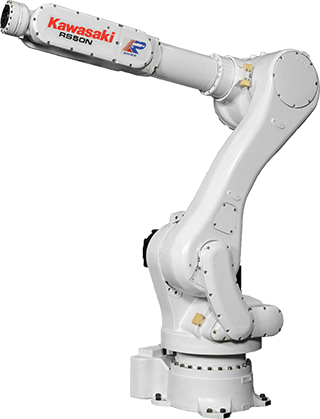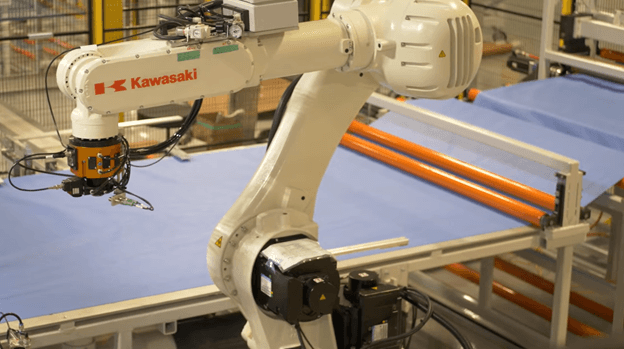
- IndustriesMedical
- ApplicationsMaterial Removal
- Robot SeriesR series
System designed by:

OVERVIEW
During the COVID-19 pandemic, the healthcare industry faced a large-scale personal protective equipment (PPE) shortage, which put frontline workers at risk of infection. Seeing this struggle, Ontario-based integrator and tool builder Harbour Technologies pivoted their business to include a new title: PPE manufacturer. Harbour Technologies designed a robotic PPE manufacturing cell to swiftly manufacture FDA-approved isolation gowns, which helped the Canadian government provide more PPE to hospitals in need across the country. Because of their success, Harbour Technologies is setting their sights on providing PPE not just to Canada – but to the rest of the world.
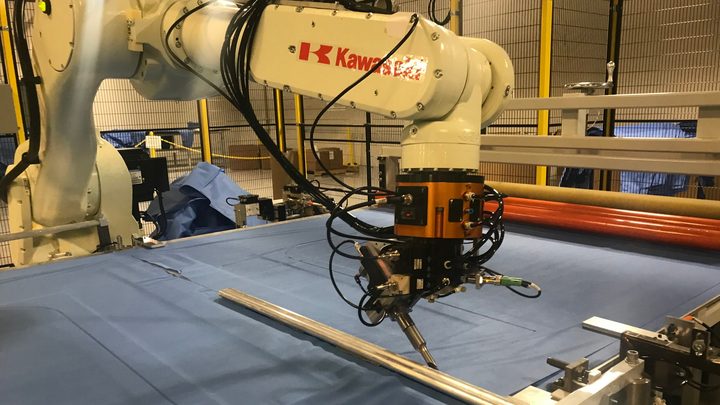
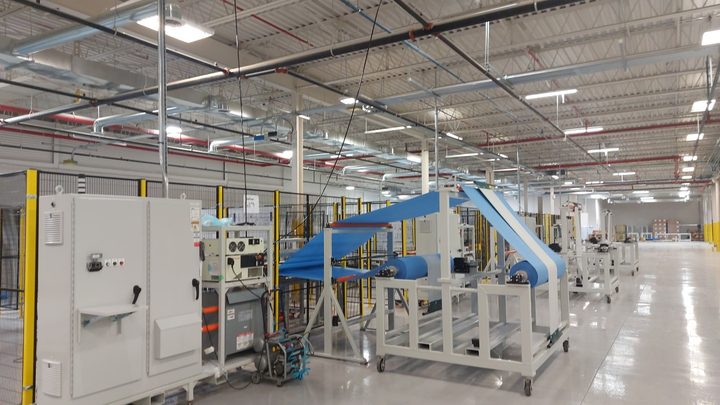
CHALLENGES
Keeping frontline workers safe
Supply chain issues combined with overfilled hospitals caused a shortage in the PPE needed to help protect frontline workers. “It’s tremendously important for Canada to have resilience in manufacturing PPE,” said Harbour Technologies co-owner, Andrew Glover. “We saw it firsthand in the beginning of the pandemic, where there was a shortage of PPE across North America, especially in Canada.”
Eliminating Errors
When it comes to manufacturing Level 3 isolation gowns, the FDA has extremely high standards for approval. According to the FDA, all areas of the surgical isolation gown except bindings, cuffs, and hems are considered critical zones of protection and must meet the highest liquid barrier protection level for which the gown is rated. Because of this, quality control was crucial for Harbor Technologies. Robotic PPE manufacturing allowed them to meet this standard. “We found there was a lot of substandard PPE that put our frontline workers at risk,” Andrew said. “With our Kawasaki robotic gown system, the quality is far superior than anything made manually.”
User-Friendly is a Must
Harbour Technologies needed a user-friendly system their their employees could easily operate. “We wanted to make sure when an operator hits ‘start’ on the machine it does what it needs to do,” Harbour Technologies Co-Owner, David Glover said. “So anyone can grab the pendant and start operating.”
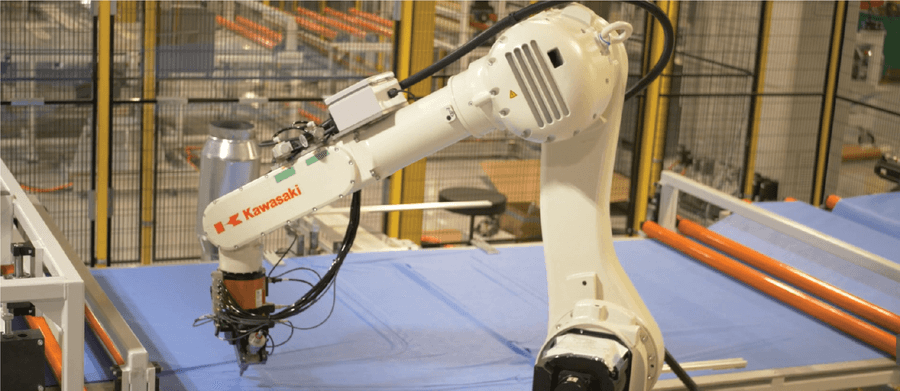
SOLUTION
- Kawasaki RS050N robot completes multiple tasks within PPE manufacturing cell
- Robot uses tool changing station to alternate between ultrasonic welding, knife and gripper tools
- Scalable solution that will expand to 14 cells between two Harbour Technologies locations in Canada
To start, operators load large rolls of gown material into the cell. Servo-controlled rollers release the amount of material needed to produce one gown. They can be adjusted on the fly to accommodate different products.
Once the tabletop workspace is covered in material, the robot uses a tool changing station to equip a proprietary rotary ultrasonic welding horn designed by Harbour Technologies. Using this tool, the robot traces the gown profile to bond the front and back pieces of material together.
Next, the robot automatically changes tools to equip a knife. It follows the same path to cut the shape of the gowns or accessories such as neck ties or waistbands. Then, the robot changes tools a third time to a gripper that picks up the completed gown and sets it aside for packing. Lastly, Harbour Tech employees manually pack the product for distribution.
The system uses a Kawasaki RS050N robot, which offers a 50 kg payload and a 2,100 mm reach. In order to choose the right robot for their application, Harbour Technologies met with Kawasaki’s engineering team to discuss the details of their application.
“We teamed up with Kawasaki Robotics, which filled the need perfectly not only with their robots – but with their continuous support,” said David. “We sat with their engineering team, gave them our requirements, and worked together to select the proper robot and platform.”
RESULTS
From a manufacturing standpoint, automating this process provides many advantages. First off, this cell makes it possible to increase production significantly while reducing labor costs.
“There are multiple benefits to being able to make the gown 100% complete in a robotic system,” Andrew said. “Not just in the savings on labor, but in cycle time. We are able to produce a gown a lot faster than what’s being made manually.”
On a larger scale, this cell opens up Harbour Technologies’ business, allowing them to set the groundwork to become a global competitor in this space. Now that the first cell has been designed, Harbour plans to continue PPE manufacturing in-house and they will sell this system to other Canadian businesses as a part of their reshoring efforts. In addition, their company’s growth as a result of their robotic PPE manufacturing cell has created hundreds of jobs in their community.
“There was never PPE manufacturing in Canada at this level… With the robotic systems, it allows us to compete globally, which therefore creates jobs locally that were never there before,” Andrew said. “Throughout Ontario, our productions are employing over 600 people, and that’s something that was never there prior to the pandemic. Robotics allow us to continue (creating) these jobs and continue growing in this market.”

